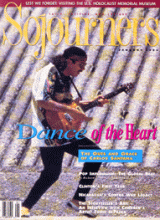The new shantytowns in Managua are near traffic lights. In the early morning, children and adults pour forth from the dirt-floored houses of cardboard and scrap metal to peddle their wares to drivers waiting for the lights to change. They sell radios, silverware, television antennas, cigarettes, chewing gum, lottery tickets, tropical birds, tummy stretchers, newspapers, and homemade candy; some wash car windows. The drivers courteously ignore the unkempt lot, but buy enough to give the vendors hope.
At the end of the day, the poor return to their homes. As darkness comes, the barrio's night shift emerges. Young girls in party dresses head off for night spots and urban arterials where they'll spend the evening selling their bodies.
Nicaragua. What Salman Rushdie once called a "fulcrum point of history" has come to resemble any old banana republic.
Almost four years ago, in a country exhausted by war and strife, Violeta Barrios de Chamorro won an election promising peace and prosperity. Yet today the majority of Nicaraguans is worse off than in the mid-'80s at the height of the U.S.-sponsored war and economic blockade. Nicaragua challenges Haiti for last place on the list of the hemisphere's socioeconomic indicators.
War continues to plague the mountainous north of the country. Indigenous groups on the Caribbean coast, where unemployment runs to 90 percent, seem sentenced to permanent neglect. The capital's feuding political class provides high drama but few solutions. The poor are left to sell shoelaces in the city and pray for rain in the countryside.
Despite her government's failings, Chamorro enjoys wide respect. She did, after all, end the eight-year contra war during her first year in office. Yet the promises she made to convince combatants to lay down their arms have gone largely unkept. Of the 100,000 hectares of land the government distributed
Read the Full Article
